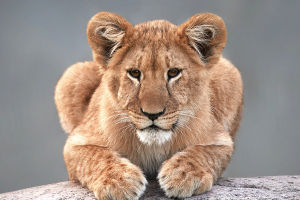Blue Jays
Blue jays are one of the most recognizable and striking birds native to North America, thanks to their vibrant blue feathers and loud, distinctive calls.
These medium-sized birds are part of the crow family, known for their intelligence and complex social behaviors.
For bird enthusiasts and Lykkers interested in learning more about these colorful creatures, this guide provides essential insights into their habits, characteristics, and how to create a bird-friendly environment that attracts them to your yard.
Appearance and Behavior
With their vivid blue plumage, white bellies, and black markings around their face and neck, blue jays are easy to identify. One of their most notable features is the crest on top of their heads, which they can raise or lower depending on their mood—usually signaling curiosity or aggression.
Blue jays are not only beautiful but also highly intelligent. They are known for their mimicry, often imitating the calls of other birds, including hawks, to deceive competitors or predators. In the wild, they are also resourceful, gathering food like nuts, seeds, and small insects and caching them for later use, showing off their sharp problem-solving skills.
Creating a Blue Jay-Friendly Environment
If you’re a Lykker hoping to invite blue jays into your yard, consider setting up a bird-friendly space that caters to their preferences. These birds are attracted to:
Nut feeders: Blue jays love acorns and peanuts, so providing a sturdy feeder filled with unshelled peanuts or acorns will quickly catch their attention.
Birdbaths: Jays enjoy splashing around in water, so adding a shallow birdbath with fresh water will make your garden more appealing.
Tree cover: Blue jays prefer areas with dense tree coverage for nesting and protection. Planting native trees or ensuring that your yard has enough natural cover will encourage them to stay.
Blue jays are also known to be protective of their territories, so they may help deter other birds and animals from taking over the space.
Funny Facts About Blue Jays
There’s no shortage of quirky and entertaining facts about these birds. For instance, blue jays can recognize human faces and may even form a bond with people who regularly feed them. They are known to remember kindness and will return to friendly yards over and over. Additionally, although they appear blue, their feathers contain no blue pigment at all! The unique structure of their feathers scatters light in a way that makes them look blue—a fascinating example of optical illusion in nature.
Another fun fact for Lykkers is that blue jays are notorious for their “alarm system.” When they spot a predator, they can alert other birds in the area by imitating the call of a hawk, causing nearby birds to scatter. It’s nature’s very own form of a neighborhood watch!
Choosing the Right Bird Feeder and Food
When selecting a bird feeder for blue jays, make sure it’s robust and capable of holding heavier birds, as blue jays can weigh around 70-100 grams. Platform feeders or sturdy pole feeders work best. Avoid flimsy feeders that might not be able to support their size.
As for food, blue jays are omnivores and prefer a diet of seeds, nuts, and insects. In the wild, they often gather acorns, making oak trees a favorite for nesting and feeding. If you’d like to cater to them, stock your feeder with peanuts, sunflower seeds, and suet during colder months.
Events for Bird Lovers
There are many bird-watching events across North America where Lykkers can join fellow bird enthusiasts. Many events focus on celebrating local bird species, offering a chance to spot blue jays in their natural habitats. Some of these include:
The Great Backyard Bird Count: Held annually in February, this global bird-watching event encourages participants to record the bird species they see in their backyards. It’s an excellent opportunity to spot blue jays and contribute to citizen science.
Birding Festivals: Local birding festivals often take place in spring and summer, offering guided tours, workshops, and lectures. These festivals are a great way to learn more about blue jays and other native species while enjoying nature.
10 Fun Facts About Blue Jays | Noisy, Beautiful, Interesting
video by Lesley the Bird Nerd
Conclusion
For Lykkers who enjoy bird watching or are looking to attract more wildlife to their yard, blue jays are a fantastic choice. Their intelligence, vibrant colors, and amusing antics make them a delight to observe. By providing the right environment with plenty of food, water, and shelter, you can turn your outdoor space into a welcoming haven for these stunning birds.


